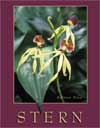1. Distinguishing between fact and fantasy in reported past uses of
plants is often difficult. Teams of specialists are interviewing tribal medicine
men and women of the tropics to try to save potentially useful plants from extinction.
2. N. I. Vavilov proposed eight major centers of distribution of cultivated
plants. More recent studies by Harlan and others indicate strict recognition
of the centers is without merit. 3. Flowering plant families are surveyed in evolutionary sequence, discussing
first those considered primitive. 4. The Buttercup Family (Ranunculaceae) includes buttercup, columbine,
larkspur, anemone, monkshood, Clematis, goldenseal, and wolfsbane. 5. The Laurel Family (Lauraceae) includes cinnamon, camphor, sassafras,
sweet bay, California bay (or myrtle), avocado, and laurel. 6. The Poppy Family (Papaveraceae) includes bloodroot and opium poppy
(the source of medicinal drugs and heroin). 7. The Mustard Family (Brassicaceae) includes cabbage, cauliflower,
brussels sprouts, broccoli, radish, kohlrabi, turnip, horseradish, watercress,
rutabaga, shepherd's purse, western wallflower, dyer's woad, and camelina. 8. The Rose Family (Rosaceae) includes stone fruits (e.g., cherry, apricot,
peach, plum), strawberry, raspberry, rose, and related wild species. 9. The Legume Family (Fabaceae) includes pea, bean, lentil, peanut,
soybean, alfalfa, clover, licorice, wattle, indigo, logwood, locoweed, jicama,
sensitive plant (Mimosa pudica), and winged bean. 10. The Spurge Family (Euphorbiaceae) includes poinsettia, spurge, cassava,
Pará rubber, gopher plant, candelilla, castor bean, crown-of-thorns,
Mexican jumping bean, and tung oil tree. 11. The Cactus Family (Cactaceae) includes all cacti (e.g., prickly
pear, cholla, barrel cactus, peyote). 12. The Mint Family (Lamiaceae) includes rosemary, thyme, sage, oregano,
marjoram, basil, lavender, catnip, peppermint, spearmint, horehound, salvia,
Coleus, and chia. 13. The Nightshade Family (Solanaceae) includes tomato, white potato,
eggplant, pepper, tobacco, belladonna, petunia, and jimson weed (a source of
hallucinogenic drugs). 14. The Carrot Family (Apiaceae) includes dill, caraway, celery, carrot,
parsley, coriander, fennel, anise, parsnip, water hemlock, poison hemlock, cow
parsnip, squawroot, and hog fennel. 15. The Pumpkin Family (Cucurbitaceae) includes pumpkin, squash, cucumber,
cantaloupe, watermelon, vegetable sponge, gourd, melonette, and manroot. 16. The Sunflower Family (Asteraceae) includes sunflower, dandelion,
lettuce, endive, chicory, Jerusalem and globe artichokes, dahlia, chrysanthemum,
marigold, thistle, sagebrush, pyrethrum, balsamroot, tarweed, and yarrow. 17. The Grass Family (Poaceae) includes nearly all cereals (e.g., wheat,
barley, rye, oats, rice, corn), sugar cane, sorghum, citronella, and lemon grass.
18. The Lily Family (Liliaceae) includes lilies, asparagus, sarsaparilla,
squill, meadow saffron, bowstring hemp, Aloe, and New Zealand flax. 19. The Orchid Family (Orchidaceae) has highly specialized flowers.
It includes a species that is the source of vanilla flavoring. |



 2003 McGraw-Hill Higher Education
2003 McGraw-Hill Higher Education